The Great Himalayan National Park conservation area, a rich biodiversity in Himachal Pradesh and home to several rare and threatened species of flora and fauna, was on Monday approved for inscription on the UNESCO World Heritage list.
The decision comes only a day after 'Rani-ki-Vav', an 11th century stepwell in Gujarat earned the coveted status.
With this the number of world heritage sites in India goes up to 32 -- 25 cultural sites and seven natural properties.
Let’s take a look at the world heritage sites in India
Please click NEXT to go further...
Rani-ki-Vav (the Queen's Stepwell)
Photographs: Wikimedia Commons
Rani-ki-Vav (the Queen’s Stepwell)
Location: Patan, Gujarat
What UNESCO says: "Stepwells are a distinctive form of subterranean water resource and storage systems on the Indian subcontinent, and have been constructed since the 3rd millennium BC. They evolved over time from what was basically a pit in sandy soil towards elaborate multi-storey works of art and architecture."
"Rani-ki-Vav was built at the height of craftsmens’ ability in stepwell construction and the Maru-Gurjara architectural style, reflecting mastery of this complex technique and great beauty of detail and proportions."
"Designed as an inverted temple highlighting the sanctity of water, it is divided into seven levels of stairs with sculptural panels of high artistic quality; more than 500 principle sculptures and over a thousand minor ones combine religious, mythological and secular imagery, often referencing literary works."
Please click NEXT to go further...
Great Himalayan National Park
Photographs: Wikimedia Commons
Great Himalayan National Park
Location: Western Himalayan mountains, Himachal Pradesh
What UNESCO says: “GHNP is characterised by high alpine peaks, alpine meadows and riverine forests. The 90,540 ha property includes the upper mountain glacial and snow melt water source origins of several rivers, and the catchments of water supplies that are vital to millions of downstream users.”
“The GHNP protects the monsoon-affected forests and alpine meadows of the Himalayan front ranges. It is part of the Himalaya biodiversity hotspot and includes 25 forest types along with a rich assemblage of fauna species, several of which are threatened.”
Please click NEXT to go further...
Hill Forts
Photographs: Wikimedia Commons
Hill Forts
Location: Rajasthan
What UNESCO says: "The site includes six majestic forts in Chittorgarh; Kumbhalgarh; Sawai Madhopur; Jhalawar; Jaipur, and Jaisalmer. The ecclectic architecture of the forts, some up to 20 kilometres in circumference, bears testimony to the power of the Rajput princely states that flourished in the region from the 8th to the 18th centuries."
"Enclosed within defensive walls are major urban centres, palaces, trading centres and other buildings including temples that often predate the fortifications within which developed an elaborate courtly culture that supported learning, music and the arts. Some of the urban centres enclosed in the fortifications have survived, as have many of the site's temples and other sacred buildings."
"The forts use the natural defenses offered by the landscape: hills, deserts, rivers, and dense forests. They also feature extensive water harvesting structures, largely still in use today."
Please click NEXT to go further...
Western Ghats
Photographs: Wikimedia Commons
Western Ghats
What UNESCO says: "Older than the Himalaya mountains, the mountain chain of the Western Ghats represents geomorphic features of immense importance with unique biophysical and ecological processes. The site’s high montane forest ecosystems influence the Indian monsoon weather pattern."
"Moderating the tropical climate of the region, the site presents one of the best examples of the monsoon system on the planet. It also has an exceptionally high level of biological diversity and endemism and is recognised as one of the world’s eight 'hottest hotspots' of biological diversity."
"The forests of the site include some of the best representatives of non-equatorial tropical evergreen forests anywhere and are home to at least 325 globally threatened flora, fauna, bird, amphibian, reptile and fish species."
Please click NEXT to go further...
Jantar Mantar
Photographs: Wikimedia Commons
Jantar Mantar
Location: Jaipur
What UNESCO says: "The Jantar Mantar is an astronomical observation site built in the early 18th century. It includes a set of some 20 main fixed instruments. They are monumental examples in masonry of known instruments but which in many cases have specific characteristics of their own."
"Designed for the observation of astronomical positions with the naked eye, they embody several architectural and instrumental innovations. This is the most significant, most comprehensive, and the best preserved of India's historic observatories. It is an expression of the astronomical skills and cosmological concepts of the court of a scholarly prince at the end of the Mughal period."
Please click NEXT to go further...
Red Fort Complex
Photographs: Wikimedia Commons
Red Fort Complex
Location: Delhi
What UNESCO says: "Named for its massive enclosing walls of red sandstone, it is adjacent to an older fort, the Salimgarh, built by Islam Shah Suri in 1546, with which it forms the Red Fort Complex."
"The private apartments consist of a row of pavilions connected by a continuous water channel, known as the Nahr-i-Behisht (Stream of Paradise). The Red Fort is considered to represent the zenith of Mughal creativity which, under the Shah Jahan, was brought to a new level of refinement. The planning of the palace is based on Islamic prototypes, but each pavilion reveals architectural elements typical of Mughal building, reflecting a fusion of Persian, Timurid and Hindu traditions."
Please click NEXT to go further...
Chhatrapati Shivaji Terminus
Photographs: Wikimedia Commons
Chhatrapati Shivaji Terminus (formerly Victoria Terminus)
Location: Mumbai
What UNESCO says: "The Chhatrapati Shivaji Terminus, formerly known as Victoria Terminus Station, in Mumbai, is an outstanding example of Victorian Gothic Revival architecture in India, blended with themes deriving from Indian traditional architecture."
"The building, designed by the British architect F W Stevens, became the symbol of Bombay as the 'Gothic City' and the major international mercantile port of India. The terminal was built over 10 years, starting in 1878, according to a High Victorian Gothic design based on late medieval Italian models. Its remarkable stone dome, turrets, pointed arches and eccentric ground plan are close to traditional Indian palace architecture."
Please click NEXT to go further...
Champaner-Pavagadh Archaeological Park
Champaner-Pavagadh Archaeological Park
Location: Gujarat
What UNESCO says: "A concentration of largely unexcavated archaeological, historic and living cultural heritage properties cradled in an impressive landscape which includes prehistoric (chalcolithic) sites, a hill fortress of an early Hindu capital, and remains of the 16th-century capital of the state of Gujarat."
"The site also includes, among other vestiges, fortifications, palaces, religious buildings, residential precincts, agricultural structures and water installations, from the 8th to 14th centuries. The Kalikamata Temple on top of Pavagadh Hill is considered to be an important shrine, attracting large numbers of pilgrims throughout the year. The site is the only complete and unchanged Islamic pre-Mughal city."
Please click NEXT to go further...
Rock Shelters of Bhimbetka
Photographs: Wikimedia Commons
Rock Shelters of Bhimbetka
Location: Bhopal, Madhya Pradesh
What UNESCO says: "Within massive sandstone outcrops, above comparatively dense forest, are five clusters of natural rock shelters, displaying paintings that appear to date from the Mesolithic period right through to the historical period. The cultural traditions of the inhabitants of the twenty-one villages adjacent to the site bear a strong resemblance to those represented in the rock paintings."
Please click NEXT to go further...
Mahabodhi Temple Complex
Photographs: Wikimedia Commons
Mahabodhi Temple Complex
Location: Bodh Gaya, Bihar
What UNESCO says: "The Mahabodhi temple complex is one of the four holy sites related to the life of the Lord Buddha, and particularly to the attainment of Enlightenment. The first temple was built by Emperor Asoka in the 3rd century BC, and the present temple dates from the 5th or 6th centuries. It is one of the earliest Buddhist temples built entirely in brick, still standing in India, from the late Gupta period."
Please click NEXT to go further...
Mountain Railways of India
Photographs: Wikimedia Commons
Mountain Railways of India
What UNESCO says: "This site includes three railways. The Darjeeling Himalayan Railway was the first, and is still the most outstanding, example of a hill passenger railway. Opened in 1881, its design applies bold and ingenious engineering solutions to the problem of establishing an effective rail link across a mountainous terrain of great beauty."
"The construction of the Nilgiri Mountain Railway, a 46-km long metre-gauge single-track railway in Tamil Nadu State was first proposed in 1854, but due to the difficulty of the mountainous location the work only started in 1891 and was completed in 1908. This railway, scaling an elevation of 326 m to 2,203 m, represented the latest technology of the time."
"The Kalka Shimla Railway, a 96-km long, single track working rail link built in the mid-19th century to provide a service to the highland town of Shimla is emblematic of the technical and material efforts to disenclave mountain populations through the railway. All three railways are still fully operational."
Please click NEXT to go further...
Qutb Minar
Photographs: Wikimedia Commons
Qutb Minar
Location: Delhi
What UNESCO says: "Built in the early 13th century, the red sandstone tower of Qutb Minar is 72.5 m high, tapering from 2.75 m in diameter at its peak to 14.32 m at its base, and alternating angular and rounded flutings. The surrounding archaeological area contains funerary buildings, notably the magnificent Alai-Darwaza Gate, the masterpiece of Indo-Muslim art (built in 1311), and two mosques, including the Quwwatu'l-Islam, the oldest in northern India, built of materials reused from some 20 Brahman temples."
Please click NEXT to go further...
Humayun's Tomb
Photographs: Wikimedia Commons
Humayun's Tomb
Location: Delhi
What UNESCO says: "This tomb, built in 1570, is of particular cultural significance as it was the first garden-tomb on the Indian subcontinent. It inspired several major architectural innovations, culminating in the construction of the Taj Mahal."
Please click NEXT to go further...
Buddhist Monuments at Sanchi
Photographs: Wikimedia Commons
Buddhist Monuments at Sanchi
Location: Raisen district, Madhya Pradesh
What UNESCO says: "On a hill overlooking the plain and about 40 km from Bhopal, the site of Sanchi comprises a group of Buddhist monuments (monolithic pillars, palaces, temples and monasteries) all in different states of conservation most of which date back to the 2nd and 1st centuries BC. It is the oldest Buddhist sanctuary in existence and was a major Buddhist centre in India until the 12th century AD."
Please click NEXT to go further...
Nanda Devi and Valley of Flowers National Parks
Photographs: Wikimedia Commons
Nanda Devi and Valley of Flowers National Parks
Location: Chamoli Garhwal, Uttarakhand
What UNESCO says: "Nestled high in West Himalaya, Valley of Flowers National Park is renowned for its meadows of endemic alpine flowers and outstanding natural beauty. This richly diverse area is also home to rare and endangered animals, including the Asiatic black bear, snow leopard, brown bear and blue sheep."
"The gentle landscape of the Valley of Flowers National Park complements the rugged mountain wilderness of Nanda Devi National Park. Together they encompass a unique transition zone between the mountain ranges of the Zanskar and Great Himalaya, praised by mountaineers and botanists for over a century and in Hindu mythology for much longer."
Please click NEXT to go further...
Sundarbans National Park
Photographs: Wikimedia Commons
Sundarbans National Park
Location: South 24 Parganas, West Bengal
What UNESCO says: "The Sundarbans covers 10,000 sq km of land and water (more than half of it in India, the rest in Bangladesh) in the Ganges delta. It contains the world's largest area of mangrove forests. A number of rare or endangered species live in the park, including tigers, aquatic mammals, birds and reptiles."
Please click NEXT to go further...
Group of Monuments at Pattadakal
Photographs: Wikimedia Commons
Group of Monuments at Pattadakal
Location: Pattadakal, Karnataka
What UNESCO says: "Pattadakal represents the high point of an eclectic art which, in the 7th and 8th centuries under the Chalukya dynasty, achieved a harmonious blend of architectural forms from northern and southern India. An impressive series of nine Hindu temples, as well as a Jain sanctuary, can be seen there. One masterpiece from the group stands out -- the Temple of Virupaksha, built by Queen Lokamahadevi to commemorate her husband's victory over the kings from the South."
Please click NEXT to go further...
Great Living Chola Temples
Photographs: Wikimedia Commons
Great Living Chola Temples
Location: Thanjavur, Tamil Nadu
What UNESCO says: "The temples were built by kings of the Chola Empire, which stretched over all of south India and the neighbouring islands. The site includes three great 11th- and 12th-century temples: the Brihadisvara Temple at Thanjavur, the Brihadisvara Temple at Gangaikondacholisvaram and the Airavatesvara Temple at Darasuram."
"The Temple of Gangaikondacholisvaram, built by Rajendra I, was completed in 1035. Its 53-m vimana (sanctum tower) has recessed corners and a graceful upward curving movement, contrasting with the straight and severe tower at Thanjavur. The Airavatesvara temple complex, built by Rajaraja II, at Darasuram features a 24-m vimana and a stone image of Shiva. The temples testify to the brilliant achievements of the Chola in architecture, sculpture, painting and bronze casting."
Please click NEXT to go further...
Elephanta Caves
Photographs: Wikimedia Commons
Elephanta Caves
Location: Mumbai
What UNESCO says: "The 'City of Caves', on an island close to Mumbai, contains a collection of rock art linked to the cult of Shiva. Here, Indian art has found one of its most perfect expressions, particularly the huge high reliefs in the main cave."
Please click NEXT to go further...
Khajuraho Monuments
Photographs: Wikimedia Commons
Khajuraho Monuments
Location: Chhatarpur district, Madhya Pradesh
What UNESCO says: "The temples at Khajuraho were built during the Chandella dynasty, which reached its apogee between 950 and 1050. Only about 20 temples remain; they fall into three distinct groups and belong to two different religions – Hinduism and Jainism. They strike a perfect balance between architecture and sculpture. The temple of Kandariya is decorated with a profusion of sculptures that are among the greatest masterpieces of Indian art."
Please click NEXT to go further...
Hampi Monuments
Photographs: Wikimedia Commons
Hampi Monuments
Location: Bellary, Karnataka
What UNESCO says: "The austere, grandiose site of Hampi was the last capital of the last great Hindu Kingdom of Vijayanagar. Its fabulously rich princes built Dravidian temples and palaces which won the admiration of travellers between the 14th and 16th centuries. Conquered by the Deccan Muslim confederacy in 1565, the city was pillaged over a period of six months before being abandoned.
Please click NEXT to go further...
Fatehpur Sikri
Photographs: Wikimedia Commons
Fatehpur Sikri
Location: Agra, Uttar Pradesh
What UNESCO says: "Built during the second half of the 16th century by the Emperor Akbar, Fatehpur Sikri (the City of Victory) was the capital of the Mughal Empire for only some 10 years. The complex of monuments and temples, all in a uniform architectural style, includes one of the largest mosques in India, the Jama Masjid."
Please click NEXT to go further...
Churches and Convents of Goa
Photographs: Wikimedia Commons
Churches and Convents of Goa
What UNESCO says: "The churches and convents of Goa, the former capital of the Portuguese -- particularly the Church of Bom Jesus, which contains the tomb of St Francis-Xavier -- illustrate the evangelization of Asia. These monuments were influential in spreading forms of Manueline, Mannerist and Baroque art in all the countries of Asia where missions were established."
Please click NEXT to go further...
Manas Wildlife Sanctuary
Photographs: Wikimedia Commons
Manas Wildlife Sanctuary
Location: Barpeta, Assam
What UNESCO says: "On a gentle slope in the foothills of the Himalayas, where wooded hills give way to alluvial grasslands and tropical forests, the Manas sanctuary is home to a great variety of wildlife, including many endangered species, such as the tiger, pygmy hog, Indian rhinoceros and Indian elephant.
Please click NEXT to go further...
Keoladeo National Park
Photographs: Wikimedia Commons
Keoladeo National Park
Location: Bharatpur, Rajasthan
What UNESCO says: "This former duck-hunting reserve of the Maharajas is one of the major wintering areas for large numbers of aquatic birds from Afghanistan, Turkmenistan, China and Siberia. Some 364 species of birds, including the rare Siberian crane, have been recorded in the park."
Please click NEXT to go further...
Kaziranga National Park
Photographs: Wikimedia Commons
Kaziranga National Park
Location: Golaghat-Nagaon districts, Assam
What UNESCO says: "In the heart of Assam, this park is one of the last areas in eastern India undisturbed by a human presence. It is inhabited by the world's largest population of one-horned rhinoceroses, as well as many mammals, including tigers, elephants, panthers and bears, and thousands of birds."
Please click NEXT to go further...
Konark Sun Temple
Photographs: Wikimedia Commons
Sun Temple
Location: Konark, Odisha
What UNESCO says: "On the shores of the Bay of Bengal, bathed in the rays of the rising sun, the temple at Konarak is a monumental representation of the sun god Surya's chariot; its 24 wheels are decorated with symbolic designs and it is led by a team of six horses. Built in the 13th century, it is one of India's most famous Brahman sanctuaries."
Please click NEXT to go further...
Mahabalipuram monuments
Photographs: Wikimedia Commons
Mahabalipuram monuments
Location: Kancheepuram, Tamil Nadu
What UNESCO says: "This group of sanctuaries, founded by the Pallava kings, was carved out of rock along the Coromandel coast in the 7th and 8th centuries. It is known especially for its rathas (temples in the form of chariots), mandapas (cave sanctuaries), giant open-air reliefs such as the famous 'Descent of the Ganges', and the temple of Rivage, with thousands of sculptures to the glory of Shiva."
Please click NEXT to go further...
Taj Mahal
Photographs: Wikimedia Commons
Taj Mahal
Location: Agra, Uttar Pradesh
What UNESCO says: "An immense mausoleum of white marble, built in Agra between 1631 and 1648 by order of the Mughal emperor Shah Jahan in memory of his favourite wife, the Taj Mahal is the jewel of Muslim art in India and one of the universally admired masterpieces of the world's heritage."
Please click NEXT to go further...
Ellora Caves
Photographs: Wikimedia Commons
Ellora Caves
Location: Aurangabad, Maharashtra
What UNESCO says: "These 34 monasteries and temples, extending over more than 2 km, were dug side by side in the wall of a high basalt cliff, not far from Aurangabad, in Maharashtra. Ellora, with its uninterrupted sequence of monuments dating from AD 600 to 1000, brings the civilization of ancient India to life. Not only is the Ellora complex a unique artistic creation and a technological exploit but, with its sanctuaries devoted to Buddhism, Hinduism and Jainism, it illustrates the spirit of tolerance that was characteristic of ancient India."
Please click NEXT to go further...
Ajanta Caves
Photographs: Wikimedia Commons
Ajanta Caves
Location: Aurangabad, Maharashtra
What UNESCO says: "The first Buddhist cave monuments at Ajanta date from the 2nd and 1st centuries BC. During the Gupta period (5th and 6th centuries AD), many more richly decorated caves were added to the original group. The paintings and sculptures of Ajanta, considered masterpieces of Buddhist religious art, have had a considerable artistic influence."
Please click NEXT to go further...
Agra Fort
Photographs: Wikimedia Commons
Agra Fort
Location: Agra, Uttar Pradesh
What UNESCO says: "Near the gardens of the Taj Mahal stands the important 16th-century Mughal monument known as the Red Fort of Agra. This powerful fortress of red sandstone encompasses, within its 2.5-km-long enclosure walls, the imperial city of the Mughal rulers. It comprises many fairy-tale palaces, such as the Jahangir Palace and the Khas Mahal, built by Shah Jahan; audience halls, such as the Diwan-i-Khas; and two very beautiful mosques."



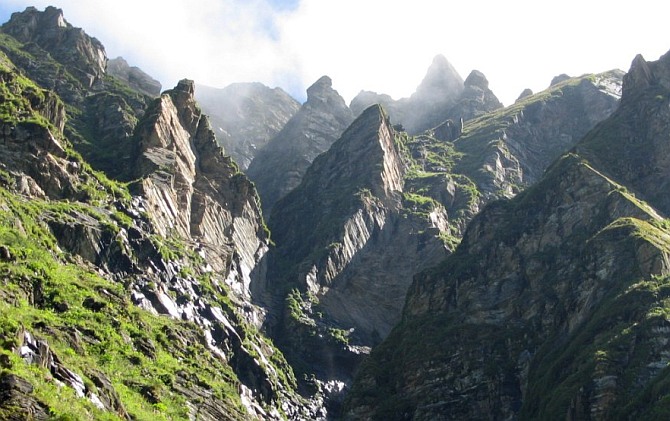

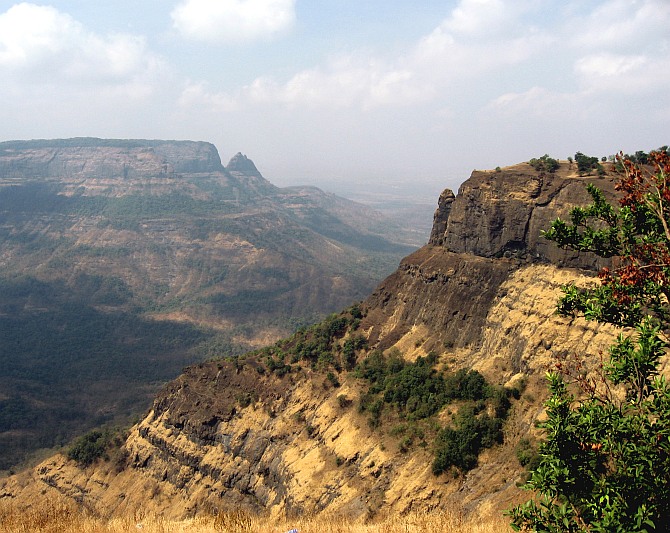
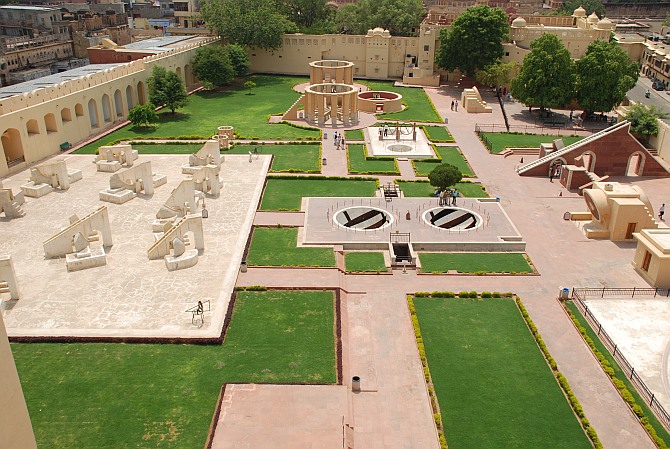


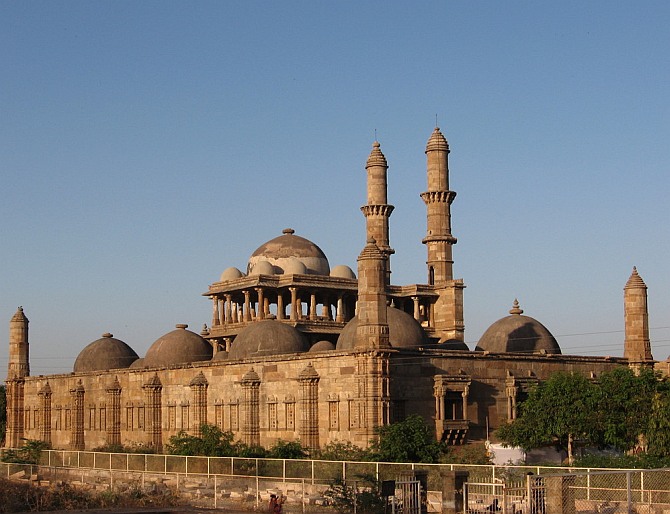

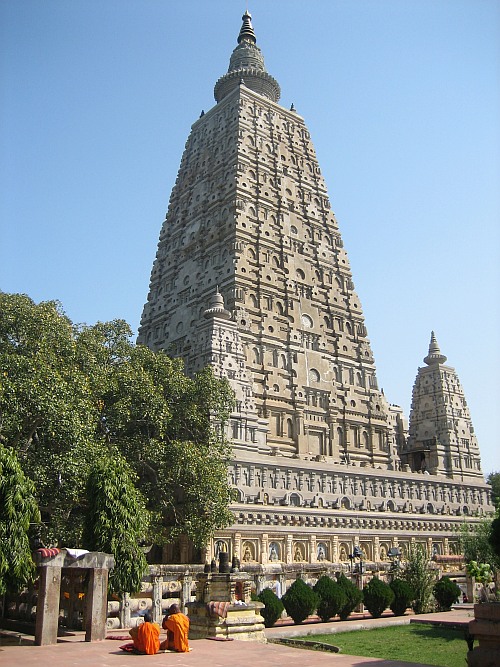
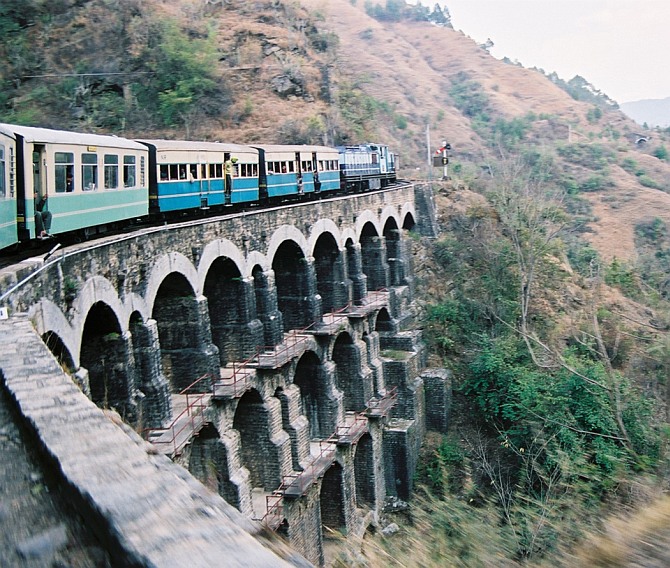


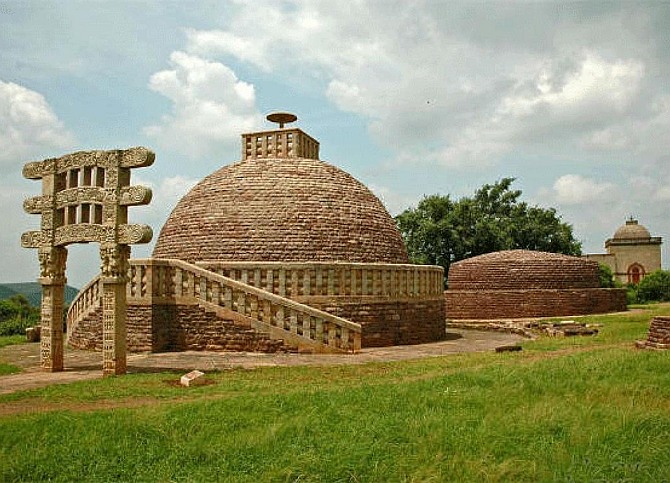
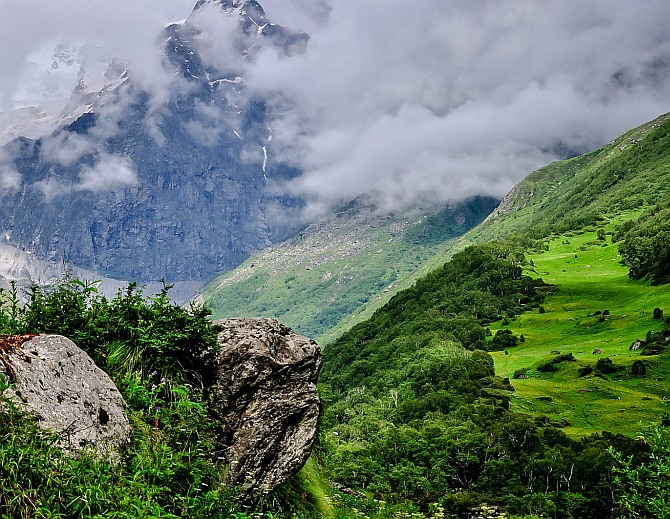
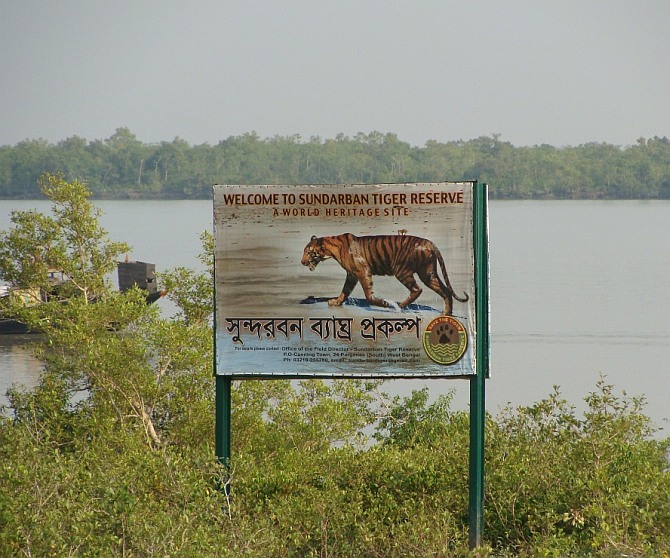
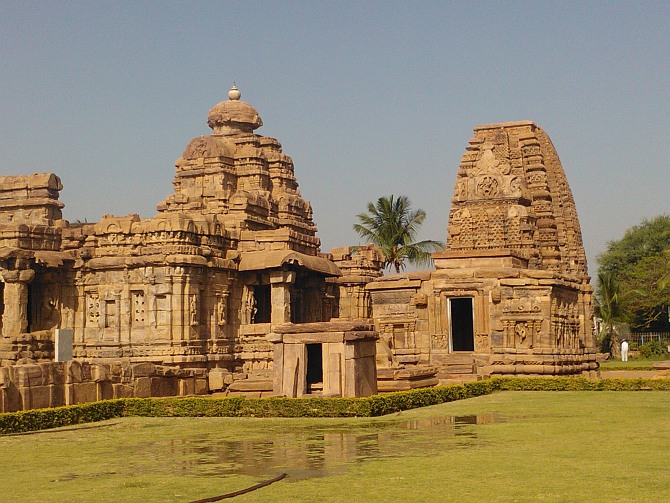
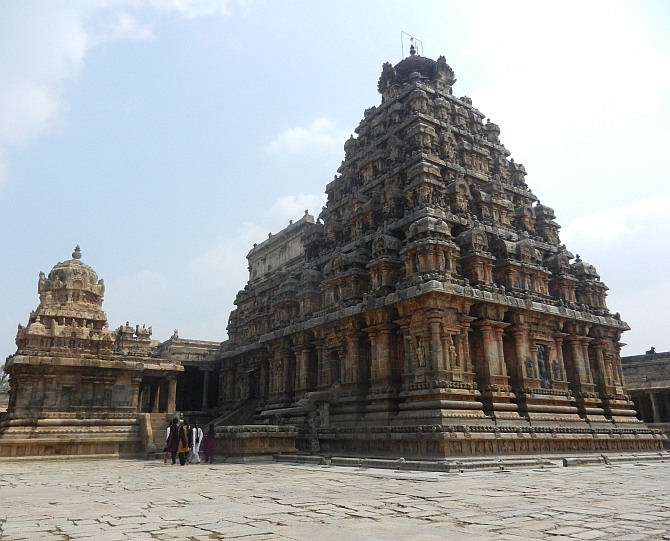
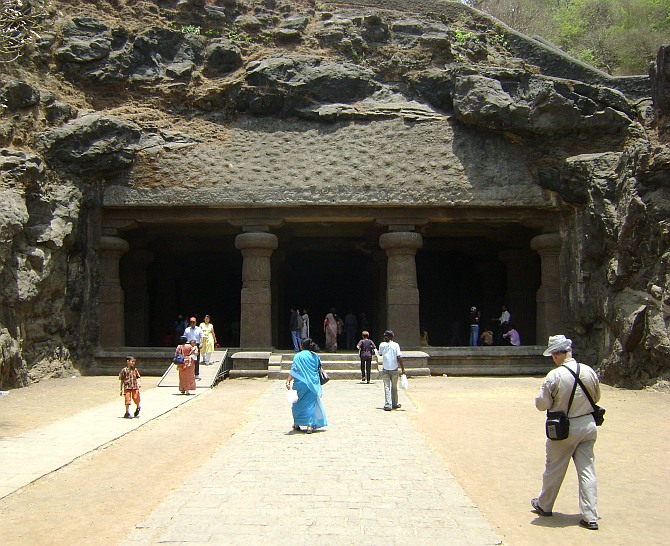
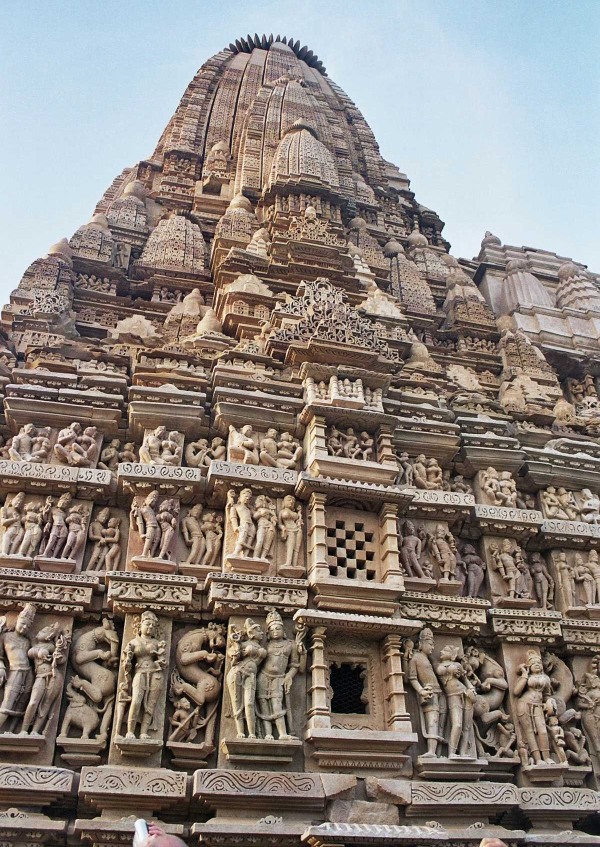

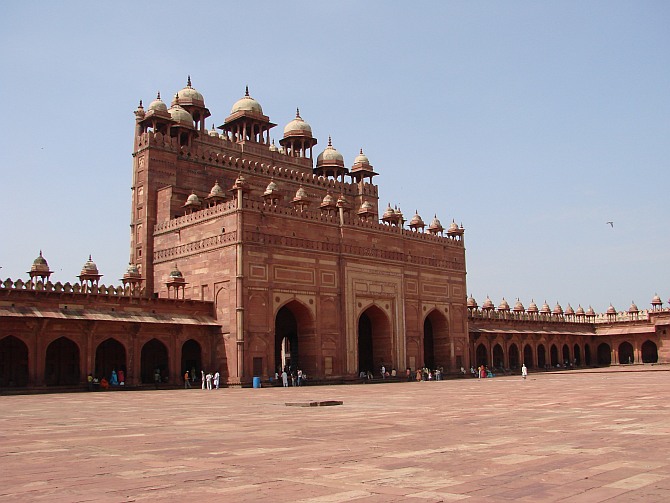

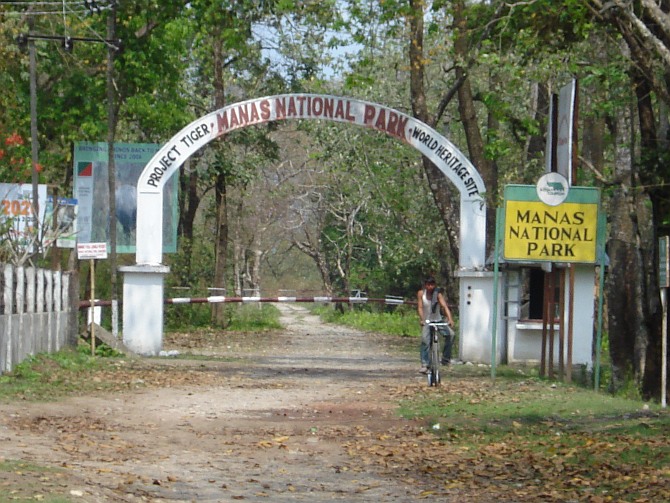
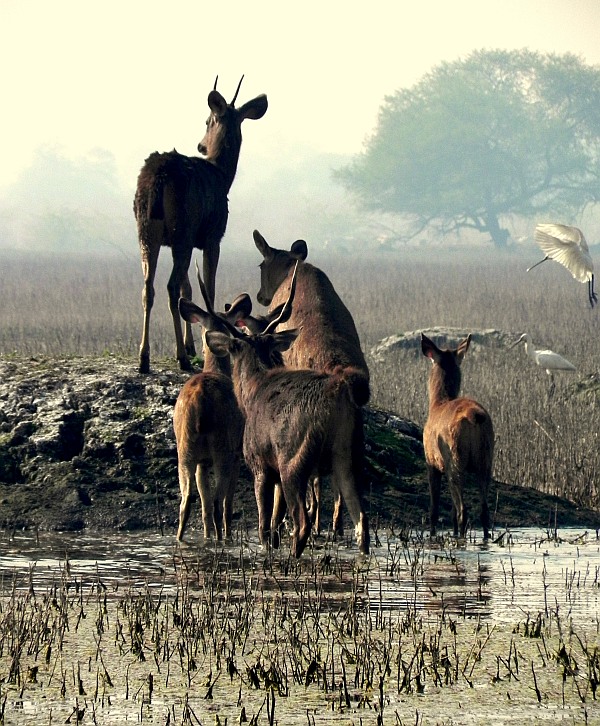




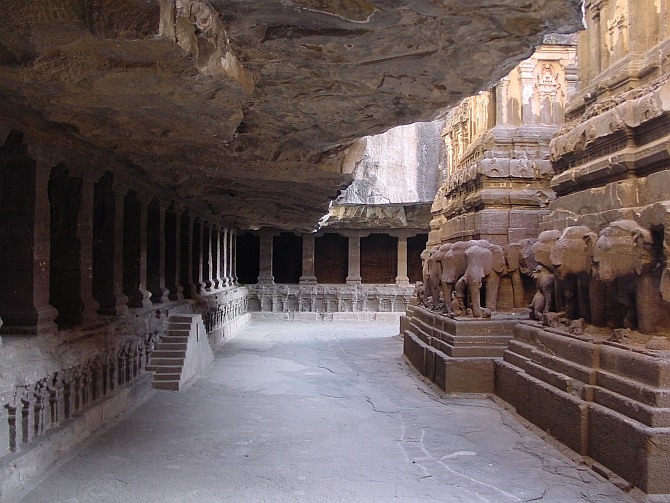
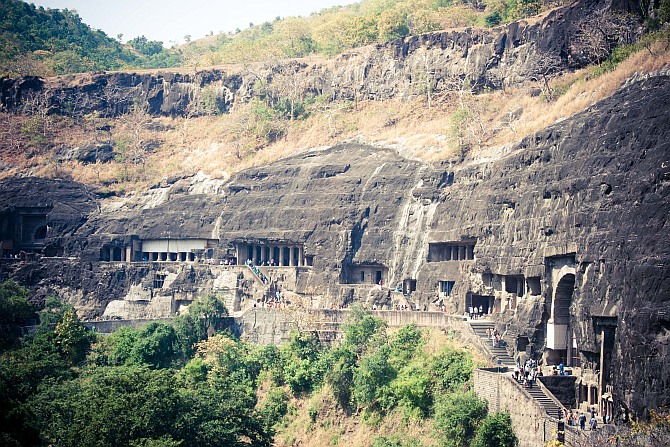
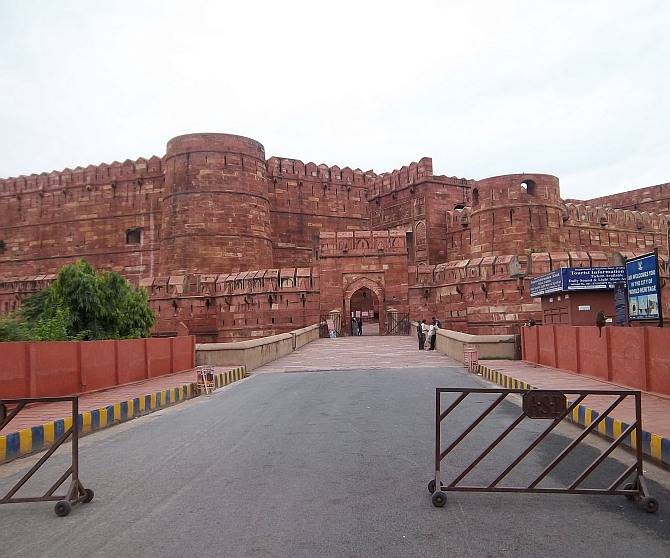
article